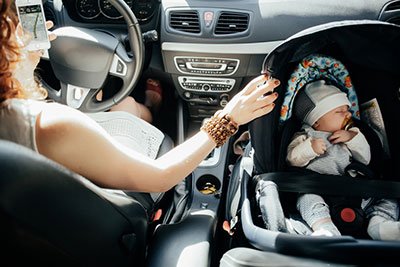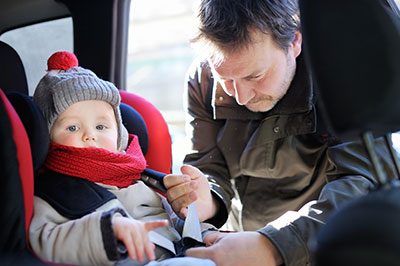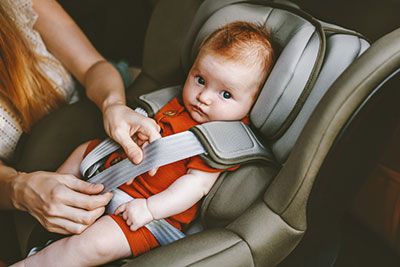Because of their differently-designed safety belt systems, there are key differences between how to install an infant seat correctly in a European vs. American vehicle. Therefore, to ensure optimal comfort and security for your child when driving, choosing the right car seat that corresponds with the correct and snug installation method is important.
This ultimate guide covers the carrier belt path European vs. American. It provides easy-to-follow instructions on installing them correctly according to the required safety standards for cars in Europe or across America.
More...
Take Away Key Points:
European vs. American seat belt path
When installing a car seat, it is important to understand the difference between European and American seat belt paths when reaching secure installation with just the carrier.
The European seat belt path involves routing the seat shoulder belt and vehicle seat belts behind the rear-facing car seat and through a designated slot on the side of the car seat. This method is preferred as it allows for a tighter fit and better protection in case of an accident.
On the other hand, the American seat belt path involves routing the seat belt over the front of the car seat and locking it into place using either a locking clip or built-in lock-offs. While this method may be easier to install, it can result in a looser fit and less protection in case of an accident.
It is important to check your car seat manual to determine which method is recommended for your specific model. Always ensure your rear-facing child's car seat is installed correctly and secured before driving to ensure their safety on the road.

How to install a carrier using the American belt path?
Sure, here are the steps to install a carrier using the American belt path:
- First, make sure your car is parked on level ground, and the parking brake is engaged before installing the American Belt Path.
- Next, locate the anchor points in your car where you will attach the carrier. Check your car manual for specific locations.
- Place the carrier in a rear-facing position in the back seat of your car.
- Thread the vehicle seat belt through the designated belt path on the infant carrier in the center seat, which should be labeled with arrows or other indicators. Next, pull down the vehicle seat belt to engage its locking feature and locking mechanism.
- Buckle the vehicle seat belt and pull it tight, so there is no slack left in the belt.
- If your car does not have built-in lock-offs, use a locking clip to secure the vehicle seat belt into place. The locking clip should be placed at least one inch away from where the seat belt buckle latch installation is in place.
- Double-check that the installation has no slack or looseness by pulling on both ends of the seat belt.
- Finally, test that your infant seat is securely installed by moving it side-to-side and front-to-back. It should not move more than one inch in any direction when installed in the American belt path.
How to install a carrier using the European belt path?
Here are the steps to install an infant carrier using the European belt path seat belt installation:
- Start by parking your car on level ground and engaging the parking brake.
- Place the carrier in a rear-facing position in the back seat of your car and route the vehicle's lap belt over the baby's upper thigh area.
- Thread the seat shoulder belt behind the back of the carrier, making sure it is not twisted.
- Pull the vehicle's seat belt across to the opposite side of the carrier and insert it through the designated slot on that side and ensure a secure and tighter installation.
- Buckle the seat shoulder belt and pull it tight, so there is no slack left in the shoulder belt.
- Double-check that there is no slack or looseness in the secure installation by pulling on both ends of the seat belt.
- Finally, test that your carrier is securely installed by moving it side-to-side and front-to-back. It should not move more than one inch in any direction.

Advantages of using the European belt path
There are several advantages to using the European belt path when installing a car seat, making it safer than other tight installation methods. Here are some of the benefits:
1. Reduced movement: The European belt path provides a more secure and stable fit for the car seat, reducing movement during travel. This means there is less chance of the car seat shifting or rotating in case of an accident, which could cause injury to your child's head. In addition, the semi-upright position enables normal driving for the baby and prevents downward rotation. Also, it gives you added safety, especially if the car seat has a load leg/anti-rebound bar.
2. Better protection: The European belt path allows for a more snug and more secure installation of the car seat, which can provide better protection for your child in case of an accident. This is because it helps distribute the force of impact evenly across the car seat, reducing stress on any one area.
3. Compatibility with different cars: The European belt routing path is compatible with most cars and car seats, making it a convenient and flexible option for parents who frequently change cars or switch between car seats.
4. Easy installation: Installing a car seat using the European belt path is generally considered easier than other methods, such as LATCH (Lower Anchors and Tethers for Children), which can be confusing or difficult to use depending on your vehicle's make and model.
Overall, using the European belt path can provide added safety benefits when installing a car seat by reducing movement, improving added protection, providing compatibility with different cars, and offering easy installation. However, it's important to always refer to your specific car and carrier manuals for detailed instructions and safety guidelines when installing a car seat.
Possible disadvantages of using a European belt path
While the European belt path has several advantages for installing a car seat, there are also some potential disadvantages to consider. Here are a few:
1. Limited space: The European belt path requires more space in the back seat of your car since it uses the seat belt to secure the car seat. This means that if you have multiple children or passengers in your vehicle, it may be challenging to accommodate everyone comfortably, especially with a larger seat. In addition, most infant seats are bulky, so they are unsuitable for European belt routing.
2. Time-consuming: Installing a car seat using the European belt path can be more time-consuming than other methods, such as LATCH, because it involves threading the seat belt through designated slots and tightening it securely.
3. Not suitable for all cars: While the European belt routing is generally compatible with most cars and car seats, there may be some vehicles or models where this method is not recommended or possible due to design limitations.
4. Incorrect installation: If not installed correctly, the European belt path can be less safe than other installation methods because it relies heavily on proper positioning and tightening of the seat belt. This means that parents must take extra care to ensure they follow instructions carefully and double-check their work before hitting the road.
FAQs
Is the European belt path safer?
The European belt path is considered to be a safe method for installing a car seat, and it has several advantages over other installation methods, such as LATCH. However, the safety of any installation method ultimately depends on proper use and adherence to manufacturer instructions.
What is a European belt path?

The European belt path is a method of installing a car seat that uses the vehicle's seat belt to secure the car seat in place. It involves threading the seat belt through designated slots on the car seat and tightening it securely to hold the car seat firmly in position.
Can I use a European car seat in the USA?
It is not recommended to use a European car seat in the USA as most European car seats do not meet the safety standards and regulations required by US law. Therefore, choosing a car seat that meets all relevant safety requirements and guidelines for use in the United States is important.
Do European cars have the LATCH system?
Yes, many European cars do have the LATCH (Lower Anchors and Tethers for Children) system. In fact, the LATCH system is an internationally recognized standard for securing child car seats in vehicles, and many European car manufacturers have incorporated this system into their vehicles.
Is ISOFIX mandatory in Europe?
Yes, ISOFIX is mandatory in Europe for new cars and car seats. The European Union made it mandatory for all new cars to be equipped with the ISOFIX system from 2014 onwards, and all new child car seats sold in Europe must also be compatible with the ISOFIX system.
What do you do with car seats when traveling in Europe?
If you're traveling by car or renting a vehicle, bringing your car seat from home is usually best. This ensures that you have a seat that fits your child properly and that you're familiar with how to use it correctly. However, keep in mind that if you're flying to Europe, you'll need to check the car seat as luggage or purchase a separate ticket if you want to use it on the plane.
Many rental car companies in Europe offer the option to rent a car seat along with your vehicle rental.
Conclusion
In conclusion of, our carrier belt path European vs. American review, we can say the following:
A European belt path is an excellent option for parents who want an easier and safer way of installation for their child's car seat.
This method allows for a tighter fit with the vehicle compared to American installations, making it a viable choice for anyone looking for an extra layer of security.
Of course, whichever way you choose, it's important to make sure your car seat is secure, properly installed, and has all other safety requirements in place before use - so double-check before hitting the road!
Additionally, make sure you get updated information on safety regulations regarding car seats, as they can vary by country. However, as long as due diligence is exercised, families should be able to have peace of mind knowing they have done their best to secure their baby's well-being.
